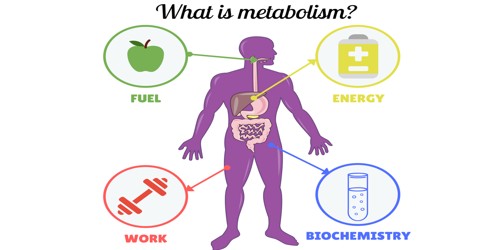Metabolism is the chemical reaction which keep us alive. It is the process by which your body converts what you eat and drink into energy. It happens in the cells of living organisms. It is a term that is used to describe all chemical reactions involved in maintaining the living state of the cells and the organism.
Reactions catalyzed by enzymes allow organisms to grow, reproduce, maintain their structures, and respond to their environments. The word ‘metabolism’ can also refer to digestion and the transport of substances into and between different cells. During this complex biochemical process, calories in food and beverages are combined with oxygen to release the energy your body needs to function. The chemical reactions of metabolism are organized into metabolic pathways.
The metabolism of a living organism allows it to determine which substances are nutritious and useful, and which are poisonous. Metabolism is usually divided into two categories. Catabolism breaks down organic matter and harvests energy by way of cellular respiration. Anabolism uses energy to construct molecules such as proteins and nucleic acids.
Metabolism is closely linked to nutrition and the availability of nutrients. Energy needs for your body’s basic functions stay fairly consistent and aren’t easily changed. The chemical reactions of metabolism are organized into metabolic pathways, or cycles, like the Krebs cycle. One chemical is transformed through a series of steps into another chemical by a series of enzymes. Intermediary or intermediate metabolism is the term for the transport of substances into and between different cells.
The metabolic system of an organism decides which substances it finds nutritious and which poisonous. It is the biochemical process of combining nutrients with oxygen to release the energy your our bodies need to function. For example, some prokaryotes use hydrogen sulfide as a nutrient, yet this gas is poisonous to animals. The speed of metabolism, the metabolic rate, influences how much food an organism will need, and how it is able to get that food. The liver is the primary site for metabolism.
A striking feature of metabolism is the similarity of the basic metabolic pathways and components between even vastly different species. Thousands of metabolic reactions happen at the same time, all regulated by the body, to keep our cells healthy and working. The metabolic processes lead to growth and reproduction and allow living organisms to maintain their structures and respond to the surrounding environment.
















